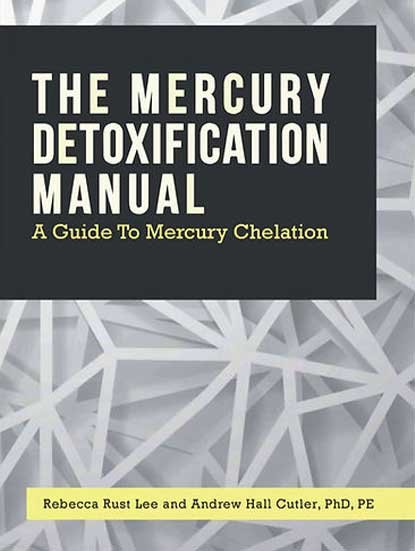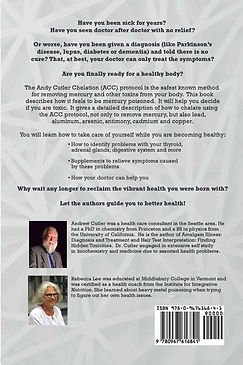The Mercury Detoxification Manual: Safe Chelation for Heavy Metal Detox
Struggling with brain fog, fatigue, or chronic health issues? These could be signs of mercury poisoning from amalgam dental fillings or other sources. The Mercury Detoxification Manual: A Guide to Mercury Chelation by certified health coach Rebecca Rust Lee and chemistry PhD Andy Cutler, is your go-to resource for detoxing mercury and other heavy metals without getting hurt. Priced at $40.00, this comprehensive guide offers clear, actionable steps to reclaim your health, even if cognitive impairment makes learning challenging.
Recognize and Test for Mercury Poisoning
The book begins by detailing symptoms of mercury poisoning, such as poor concentration, anxiety, or insomnia. It explains common exposure sources, like amalgam fillings, and guides you on how to test for toxicity. Understanding your condition is the first step to recovery, and this manual makes it accessible for all readers.
Safe Amalgam Removal Before Chelation
If you have amalgam fillings, safe removal is critical before starting chelation. Chapter 5 outlines the dental work needed, how to ensure it’s done safely, and whether amalgam under crowns is a concern. This practical advice will help you prepare your body for effective detoxification.
Master Frequent Low-dose, Oral Chelation with the ACC Protocol
Two dedicated chapters cover chelation essentials. One explores chelation in general, while the other details the Andy Cutler Chelation (ACC) protocol, a method for removing mercury and heavy metals that has an over 20 year track record. These chapters provide step-by-step instructions, do’s and don’ts, and clear guidelines to ensure that you detox without redistributing toxins.
Address Common Health Issues
Chapter 8 tackles health challenges often linked to mercury toxicity, including adrenal fatigue, hypothyroidism, diabetes, liver issues, digestive problems, yeast overgrowth, depression, anxiety, insomnia, chemical sensitivity, and chronic pain. It includes charts recommending nutritional supplements to alleviate symptoms and advice on when to seek additional support from a doctor.
Optimize Your Diet for Detox
Diet is the most powerful tool you can use to control symptoms while you detox. Chapter 9 offers practical dietary advice, including how to navigate thiol food sensitivity—a common issue for mercury-toxic individuals. It provides high- and low-thiol food lists and explains how to conduct a challenge test to identify whether you fall in the category of people who should avoid thiols, or whether you are a person who needs more of them to feel better. Solving this question can help relieve symptoms significantly.
Stay Organized Despite Cognitive Challenges
Mercury toxicity can make organization difficult. The organization chapter offers strategies for managing supplements, sticking to your chelation schedule, and coping with daily tasks while dealing with brain fog. These tips are tailored to support those with cognitive impairments.
Guidance for Conception, Pregnancy and Breastfeeding
For women planning to conceive, Chapter 11 provides timelines and guidelines to detox before pregnancy, to make sure your baby does not get exposed to mercury. Chapter 12 helps parents evaluate if their child might be mercury toxic, with insights on teething charts, growth milestones, and developmental markers to watch for.
Additional Resources
The book concludes with a valuable appendix featuring FAQs, a chart of mercury levels in fish and shellfish (sourced from the FDA), a list of abbreviations, and a glossary of terms. These tools make the manual user-friendly and comprehensive.
Why Choose This Book?
- Expertise You Can Trust: Co-authored by Rebecca Rust Lee, a certified health coach from the Institute of Integrative Nutrition, and Andy Cutler, PhD, a pioneer in how to detoxify mercury and other heavy metals.
- Accessible for All: Written clearly for those with the common mercury symptoms of brain fog or other cognitive challenges.
- Holistic Approach: Combines chelation, diet, supplements, and lifestyle strategies for comprehensive detox. Indicates when additionally consulting an MD might be a wise choice.
- Practical Tools: Includes charts, lists, and actionable advice to support your journey.
Start Your Detox Journey
Ready to detox safely and reclaim your health? Purchase The Mercury Detoxification Manual for $40.00 at Maybe It’s Mercury Bookshop. For tailored support, pair it with personalized coaching from Rebecca Rust Lee at Maybe It’s Mercury.


